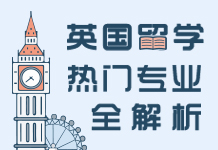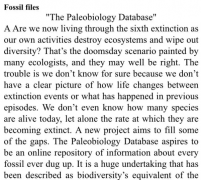2016年9月24日青岛朗阁雅思阅读考试真题回顾及解析
来源:青岛朗阁
浏览:
发布日期:2016-09-26 14:51
摘要:2016年9月24日的雅思阅读考试已经结束了,这次的雅思阅读考试考了什么内容?题目难度如何?青岛朗阁小编为考生们带来了2016年9月24日的雅思阅读考试真题回顾及解析,希望对雅思考生们有所参考~
青岛朗阁雅思阅读名师 许鑫淼
| 考试日期: | 2016年9月24日 |
| Reading Passage 1 | |
| Title: | Rainwater Harvesting |
| Question types: |
简答题; 6 判断题; 8 |
| 文章内容回顾 | 文章介绍了某个村庄水利工程的一个创新和应用,提到了村庄为何要发展这个工程,以及在发展过程中获得的利益和对未来的展望。 |
| 相关英文原文阅读 |
For two years southern Sri Lanka suffered a prolonged drought, described by locals as “the worst in 50 years”. Some areas didn’t see a successful crop for four or five consecutive seasons. Livestock died, water in wells dropped to dangerously low levels, children were increasingly malnourished and school attendance has fallen. An estimated 1.6 million people have been affected. A Muthukandiya is a village in Moneragala district, one of the drought-stricken areas in the “dry zone” of southern Sri Lanka, where half the country’s population of 18 million lives. Rainfall in the area varies greatly from year to year, often bringing extreme dry spells in between monsoons. But this drought has been much worse than usual. Despite some rain in November, only half of Moneragala’s 1,400 tube wells were in working order by March 2002. The drought has devastated supplies of rice and freshwater fish, the staple diet of inland villages. Many local industries have closed down and villagers are heading for the towns in search of work. B The villagers of Muthukandiya arrived in the 1970s as part of a government resettlemen scheme. Each family was given six acres of land, with no irrigation system. Because crop production, which relies entirely on rainfall, is insufficient to support most families, the village economy relies on men and women working as day-laborers in nearby sugar-cane plantations. Three wells have been dug to provide domestic water, but these run dry for much of the year. Women and children may spend several hours each day walking up to five kilometers to fetch water for drinking, washing and cooking. C In 1998, communities in the district discussed water problems with Practical Action South Asia. What followed was a drought mitigation initiative based on a low-cost “rainwater harvesting” technology already used in Sri Lanka and elsewhere in the region. It uses tanks to collect and store rain channeled by gutters and pipes as it runs off the roofs of houses. D Despite an indigenous tradition of rain-water harvesting and irrigation systems going back to the third century BC, policy-makers in modern times have often overlooked the value of such technologies, and it is only recently that officials have taken much interest in household-level structures. Government and other programs have, however, been top-down in their conception and application, installing tanks free of charge without providing training in the skills needed to build and maintain them properly. Practical Action South Asia’s project deliberately took a different approach, aiming to build up a local skills base among builders and users of the tanks, and to create structures and systems so that communities can manage their own rainwater harvesting schemes. E The community of Muthukandiya was involved throughout. Two meetings were held where villagers analyzed their water problems, developed a mitigation plan and selected the rainwater harvesting technology. Two local masons received several days’ on-the-job training in building the 5,000 liter household storage tanks: surface tanks out of retro-cement and underground tanks out of brick. Each system, including tank, pipes, gutters and filters, cost US$ 195 – equivalent to a month’s income for an average village family. Just over half the cost was provided by the community, in the form of materials and unskilled labor. Practical Action South Asia contributed the rest, including cement, transport and payment for the skilled labor. Households learned how to use and maintain the tanks, and the whole community was trained to keep domestic water supplies clean. A village rainwater harvesting society was set up to run the project. To date, 37 families in and around Muthukandiya have storage tanks. Evaluations show clearly that households with rainwater storage tanks have considerably more water for domestic needs than households relying entirely on wells and ponds. During the driest months, households with tanks may have up to twice as much water available. Their water is much cleaner, too. F Nandawathie, a widow in the village, has taken full advantage of the opportunities that rainwater harvesting has brought her family. With a better water supply now close at hand, she began by growing a few vegetables. The income from selling these helped her to open a small shop on her doorstep. This increased her earnings still further, enabling her to apply for a loan to install solar power in her house. She is now thinking of building another tank in her garden so that she can grow more vegetables. Nandawathie also feels safer now that she no longer has to fetch water from the village well in the early morning or late evening. She says that her children no longer complain so much of diarrhoea. And her daughter Sandamalee has more time for school work. G In the short term, and on a small scale, the project has clearly been a success. The challenge for NGOs like ITDG South Asia lies in making such initiatives sustainable, and expanding their coverage. At a purely technical level, rainwater harvesting is evidently sustainable. In Muthukandiya, the skills required to build and maintain storage tanks were taught fairly easily, and can be shared by the two trained masons, who are now finding work with other development agencies in the district. H The non-structural elements of the work, especially its financial and organizational sustainability, present a bigger challenge. A revolving fund was set up, with households that had already benefited agreeing to contribute a small monthly amount to pay for maintenance, repairs and new tanks. However, it appears that the revolving fund concept was not fully understood and it has proved difficult to get households to contribute. Recovering costs from interventions that do not generate income directly will always be a difficult proposition, although this can be overcome if the process is explained more fully at the outset. I The Muthukandiya initiative was planned as a demonstration project, to show that community-based drought mitigation through rainwater harvesting was feasible. Several other organizations have begun their own projects using the same approach. The feasibility of introducing larger tanks is being investigated. J However, a lot of effort and patience are needed to generate the interest, develop the skills and organize the management structures needed to implement sustainable community-based projects. So it will probably be some time before rainwater harvesting technologies can spread rapidly and spontaneously across the district’s villages, without external support. 答案分析: 简答题(NO MORE THAN THREE WORDS AND/OR A NUMBER) 答案:1.crop production 2. sugra-cane plantations 3. three wells 4. 1998 5. roofs of houses 6. rainwater storage tanks 判断题 答案:7. NOT GIVEN 8. YES 9.NO 10.YES 11. NO 12.YES 13.NOT GIVEN 14.NO |
| 题型难度分析 | 第一篇的这两个题型都是常规的顺序题,难度不是特别大,而且题干都比较简单易懂,加上定位也不是很难,所以第一篇的难度不是特别大。 |
| 剑桥雅思推荐原文练习 |
剑4 Test 1 Passage 1 剑4 Test 3 Passage 2 |
| Reading Passage 2 | |
| Title: | Inspired by Mimicking Mother Nature |
| Question types: |
Matching; 6 T/F/NG; 8 |
| 文章内容回顾 | 科学家对于生物界动物的体表特征的科学研究和运用。 |
| 题型难度分析 | 这篇文章的难度比第一篇的难度更高,除了顺序题型的判断题之外,还有乱序的classify的配对题。 |
| 剑桥雅思推荐原文练习 |
剑6 Test 2 Passage 1 剑6 Test 3 Passage 2 |
| Reading Passage 3 | |
| Title: | The Role of Science in the 18th Development |
| Question types: |
段落信息配; 6 Summary; 6 |
| 文章内容回顾 |
科学家对于化学的运用以及化学的自身发展史和在发展过程中的限制 A段讲18世纪启蒙运动发展,B讲牛顿理论建立,让科学家们发现都是有规律可寻的,C讲工业革命的发展以及当时社会情况,D讲其他科学相较化学,研究方式简单,因此发展较好,E化学缺乏必要工具,不能很好控制火,看化学反应,F讲化学工具的小进展,比如用蜡烛的根数来控制火的温度,G讲发展因素 答案(仅供参考) SUMMARY 34.tools 35.astronomy 36.physics 37.candles 38.burning glass 39.pendulum 40.mercury |
| 题型难度分析 | 本篇文章还是以配对题作为主打题型,既有细节也有主旨,总体难度相对而言较高。 |
| 剑桥雅思推荐原文练习 |
剑4 Test 3 Passage 3 剑7 Test 2 Passage 2 |
|
考试趋势分析和备考指导: 本次雅思阅读考试中前两篇为旧题型,第三篇为新题,本次出现了很多“人见人烦”的配对题,尤其是段落细节配对题和改头换面的classify分类配对题。自16年以来,配对题比例在逐渐增加,而这种题型,是考生觉得最难的题型,是因为这种题型几乎无法进行猜测,基本上要靠语言实力,也就是说只有读懂了才能把题目做对,这就决定了这种题目的难度。 除此之外,判断题和摘要题仍然保持主流题型。各种题型出现的频率相对稳定,考生要特别注意每一种题型的复习,切不可因侥幸心理忽视了某种题型技巧的复习,因为很有可能忽略的题型成为考试中的主导题型。下一场的小烤鸭可以相对注重一下LOH这一题型。 |
|

扫二维码,添加朗阁咨询老师,备注“官网”
免费领取雅思、托福备考计划、精选资料,最新口语新题考点资料
25
2022-06
-
2020年1月16日雅思听力考试真题
2020年1月16日雅思考试已经结束,正在备考雅思的小伙伴,你们想要知道这次考试的听力部分都...
25
2022-06
-
2020年1月16日雅思阅读考试真题
正在进行雅思备考的小伙伴,你们想知道2020年1月16日雅思考试的考试内容吗?今天为了帮助大家...
25
2022-06
-
2020年1月16日雅思写作考试真题
今天为了帮助正在进行雅思备考的小伙伴更好的准备雅思考试,青岛朗阁雅思写作名师 费晓静...
25
2022-06
-
2020年1月16日雅思口语考试真题
今天青岛朗阁雅思口语名师张开翼为大家整理了2020年1月16日雅思口语考题总结,分析了雅思口...
04
2020-12
-
2020年11月14日朗阁雅思听力考题回顾
今天,要和大家分享的是2020年11月14日朗阁雅思听力考题回顾,希望这篇文章能够对大家的学习...
04
2020-12
-
2020年11月14日朗阁雅思阅读考题回顾
今天,要和大家分享的是2020年11月14日朗阁雅思阅读考题回顾,希望这篇文章能够对大家的学习...
热门课程
大家都在看
阅读(2095)
阅读(1965)
阅读(1942)
阅读(1323)
阅读(1093)
阅读(831)







